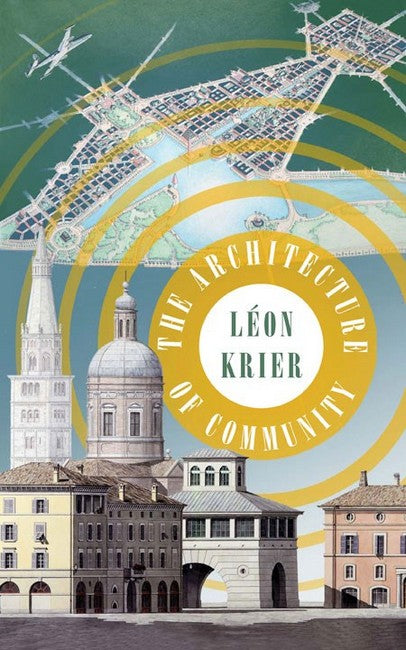Foreword \ Robert A. M. Stern
Preface: The Art of Making Places
PART I. Aspects of Modernity
Chapter 1. Introduction
Chapter 2. Contemporary Prospects
Chapter 3. From Political Pluralism to Architectural Plurality
Chapter 4. The Authority of the Architect in a Democracy
Chapter 5. Toward a Coexistence of Doctrines
Chapter 6. The Architects Categorical Imperative
PART II. Nature of the Architectural Object
Chapter 1. Res Publica GÇó Res Privita
Chapter 2. Nameable Objects and So-called Objects
Chapter 3. Definition of the Architectural Object
Chapter 4. True and False Monuments
Chapter 5. Technology and Architectural Expression
Chapter 6. Summary of Terms and Concepts
-modernity GÇó modernism GÇó tradition
-typology GÇó type GÇó composition
-invention GÇó innovation GÇó discovery
-Traditional architecture: vernacular building and classical architecture
-Region and style
PART III. Critique of a Modernist Ideology
Chapter 1. ""How to Make the Easy Difficult by Way of the Useless""
Chapter 2. Modernism and the Anticonformism of the Establishment
Chapter 3. Historicism and Modernism
Chapter 4. Modernism and Progress
Chapter 5. The Aporia of Modernism
Chapter 6. Modernism and Experimentalism
Chapter 7. Modernism and Functionalism
Chapter 8. Modernism and Formalism
Chapter 9. Zeitgeist
Chapter 10. Modernism and Memory
Chapter 11. Modernism and Conservation: The Charter of Venice and Docomomo
Chapter 12. After Modernism
Chapter 13. Gained in Translation
PART IV. Prospects for a New Urbanism
Chapter 1. Forms of Urban Overexpansion
Chatper 2. Ecology and Urbanism GÇó The Vital Link
Chapter 3. Critique of Industrial Planning and Functional Zoning
Chapter 4. The Urbanization of the Suburbs
-New areas for urban development and the internal growth of cities
Chapter 5. The Need to Reform Development Programs
Chapter 6. The Masterplan, a Definition
Chapter 7. The Masterplan, a Tool of Public Interest
PART V. The Polycentric City of Urban Communities
Chapter 1. Cities within the City Structural Components
-urban quarter GÇó borough GÇó city GÇó metropolis
Chatper 2. City and Landscape Sustainability
Chapter 3. Structure and Form of the Urban Quarter
-size GÇó plan GÇó skyline
Chapter 4. Geometry of Urban Patterns
Chapter 5. Siting of Buildings on Squares, Streets, and Blocks
Chapter 6.Type, Shape, and Character of Urban Spaces
Chapter 7. Single-lot Blocks GÇó Multi-lot Blocks and their Architecture
Chapter 8. Hierarchy of Public Spaces and Circulation Hierarchy
Chapter 9. The Polycentric Zoning of Functions
Chapter 10. Building Heights
Chapter 11. In Praise of Towers
Chapter 12. Critical Problems of Plot-ratios
Chapter 13. Artificial Lighting of Public Spaces
PART VI. Washington DC: An Unfinished Canvas
Chapter 1. Washington DC, a Global Ecological Reconstruction
Chapter 2. Rebirth of the American City
Chapter 3. On Classical Architecture and Vernacular Building
PART VII. The Modernity of Traditional Architecture
Chapter 1. Traditional Culture and the Idea of Progress
Chapter 2. Architecture and Politics
Chapter 3. Whe Architecture Matters to You!
Chapter 4. The Destiny of Traditional Architecture
Chapter 5. The Perennial Values of the Principles of Traditional Architecture
Chapter 6. The New GÇó The Unique GÇó The Tectonic GÇó The Original
Chapter 7. Natural and Synthetic Materials
Chapter 8. Venustas GÇó Firmitas GÇó Utilitas
PART VIII. Universal Usefulness of Modern Craft Industry or the Fourth Industrial Revolution
Chapter 1. Critique of the Industrialization of Buildings
Chapter 2. The Evaluation of Buildings by their Whole Life Cycle
Chapter 3. Knowledge of Know-how: The Need for Modern Craftsmanship
PART IX. The Architectural Tuning of Settlements
Chapter 1. The Architectural Tuning of Settlements
PART X. Drawing to Reality
Chapter 1. Why I Practice Classical Architecture and Traditional Urbanism
Chapter 2. Sculpture Podium, Barcelona, Spain
Chapter 3. Tower Block Renovation, Alessandria, Italy
Chapter 4. Archeological Museum, Sintra, Portugal
Chapter 5. The Seaside Prize
Chapter 6. Robert Davis Laudatio
Chapter 7. Krier House, Seaside, Florida, USA
Chapter 8. Citt+á Nuova, Alessandria, Italy
Chapter 9. Windsor Village Hall, Vero Beach, Florida, USA
Chapter 10. Brasserie Agape, Val DEurope, France
Chapter 11. The Jorge M. Perez Architectural Center, University of Miami, Coral Gables, Florida, USA
Chapter 12. The Richard H. Driehaus Prize for Classical Architecture
Chapter 13. Jaque Robertson Laudatio
Chapter 14. Hameau-des-Pins, Hardelot, France
Chapter 15. Poundbury, Dorchester, Dorset, UK
Afterwords
Conclusion
The Last Word \ James Howard Kuntsler
Index
Photo Credits
Authors Biography
Other Publications
Editors Biographies

